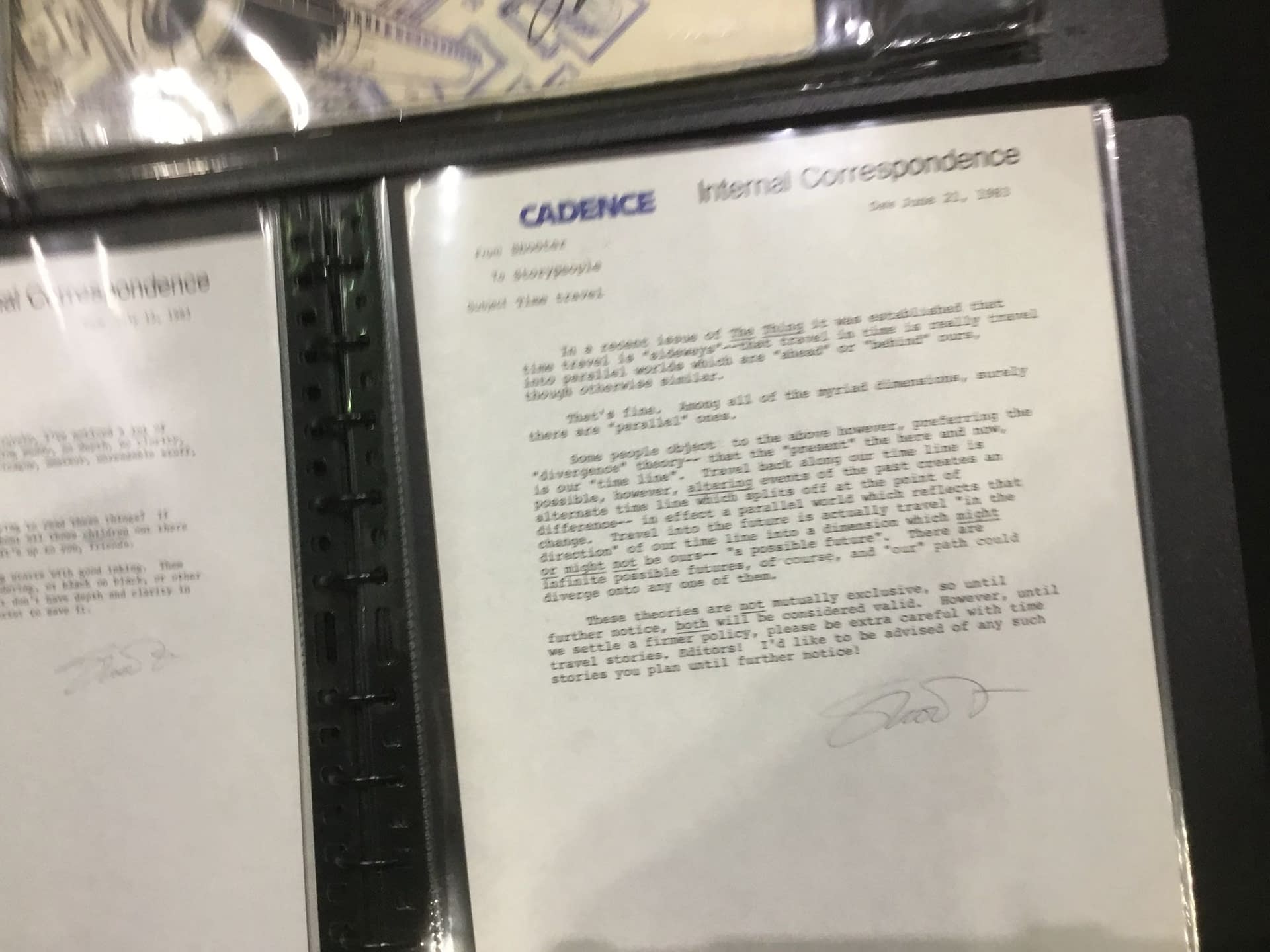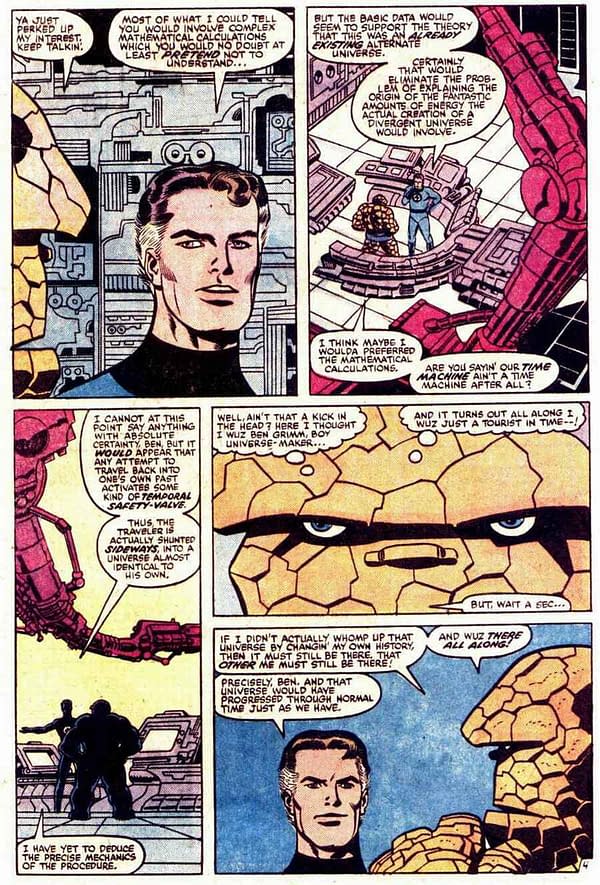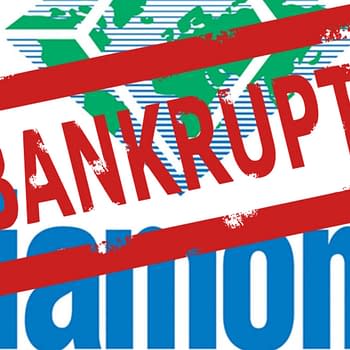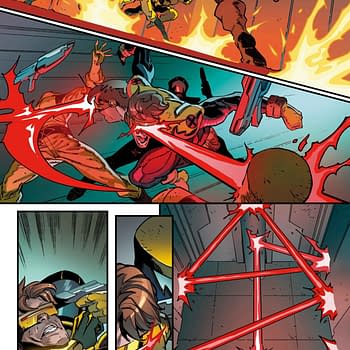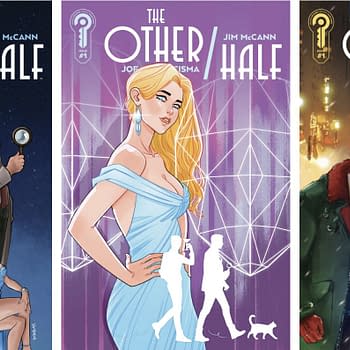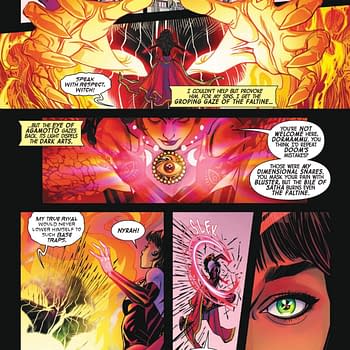Posted in: Comics, Marvel Comics | Tagged: john byrne, mark gruenwald, marvel, Marvel Comics, shooterfiles, time travel
The Jim Shooter Files: The Rules Of Time Travel for Marvel Comics
Last month's MCM London Comic Con had Jim Shooter as a guest, and at his table were a number of folders, binders, full of memos, sketches, artwork from his long career at DC, Marvel, Valiant and more. He graciously allowed Bleeding Cool to take shots of a few of them, but these are just the tip of the iceberg of the folders he often brings to shows. But for Thanksgiving, Bleeding Cool will be sharing a few of them, and you can check the rest with this handy dandy tag.
Sorry for the blurriness, but I've done the squinting for you. Marvel editor and writer Mark Gruenwald famously laid out some time travel rules, that were used pretty much as originally planned in Avengers: Endgame recently. They were originally published for readers in Marvel Age in 1992.
Mark Gruenwald's Rules Of Time Travel
One of the more interesting aspects of my job as Senior Executive Editor is I was the one who got to research, work out, and write up the rules pertaining to time travel in the Marvel Universe for our in-house editors' policy handbook. Before I came on the scene, Marvel– a publishing outfit which prides itself on its internal consistency– was a wee bit relaxed when it came to how time travel worked. Writers were free to have it work every which way (including loose) with no regard to what had already been established. Once I was designated consistency cop, it was up to me to develop the rules of M.U. time travel using the consensus of information. It was a job I must admit I relished since, ever since my self-published fanzine days, I was interested in the way fictional realities worked. So, printed here for a general audience for the first time are Marvel's official rules of time travel…
Time travel should be used very sparingly in order to keep the phenomenon as special as possible. To ensure that future usage of the phenomenon are kept consistent with the majority of past usages, observe the following principles:
1. The Marvel Universe is part of a multiverse (a system of related universes) which diverge from one another at critical junctures.
2. The act of time travel always produces a critical juncture diverging a new alternate timeline or world at the moment one enters the reality of another time period, past or future of the time period set out from. It creates one timeline where an extratemporal person or element materialized via time travel, and one 'virgin' timeline where that person or element did not.
3. Because it is impossible to travel to the 'virgin' timeline, and because divergent timelines are dimensionally displaced from one's root timeline, all time travel actually involves dimensional travel. A time traveler does not truly travel straight backwards or forwards in time, but backwards or forwards and a bit off to the side to a divergent timeline now running parallel to one's timeline of origin. Since this timeline will have been identical to the 'virgin' timeline until the moment of divergence, there will be virtually no differences between the two timelines until most time travelers have no reason to be aware that they are not on the 'virgin' timeline.
4. If one travels a second time to an era one has already been to, one will not materialize on the 'virgin' timeline nor the timeline diverged by one's previous trip, but a third timeline diverged from one or the other. A time traveler can never travel back to the exact same timeline more than once. Again, since the second and third divergent timelines are identical until the time traveler's arrival, they will be indistinguishable at first.
5. When one travels a second time to any era in which one already exists, it will be possible to meet a temporal counterpart of one's self already there. A new counterpart diverges into being every single time a time traveler travels to a timeline one already exists in. Subsequently, multiple temporal counterparts could co-exist through multiple time trips to the same time period.
6. The co-existence of mulitple counterparts of the same being on one timeline does not cause time paradoxes. Time paradoxes are only possible in single timeline universes.
7. Altering an incident in the past will indeed affect the future reality of the timeline diverged by the time traveler's presence. One can create any number of different divergencies by one's significant actions, the act of time travel being but the first. Whether one will be able to return to the present of the timeline where one did no reality-tampering divergences or one which diverged as a consequence of one's past actions is a function of the means of time travel.
8. Returning to one's present also creates a divergent reality. If one has been gone any length of time, one may find differences have accumulated in accordance with the length of time one was away.
9. Selective alterations in the present as a consequence of the time traveler's actions in the past do not occur. An alteration in the past will create an entirely new timeline with events proceeding smoothly from the point of divergence. To the denzins of that timeline's 'present', the past is a continuous series of events that always happened as they happened. Were one to see selective dematerializations, they would either be caused by something other than the act of time travel unto itself or would be hallucinations.
10. There are three possible methods of time travel in the Marvel Universe: a. Time travel machines (Dr. Doom, Kang). b. Magic (Dr. Strange, Thor's hammer). c. Personally generated energy (Silver Surfer).
All methods involve generating 'chronal displacement inertia' freeing one's chronological position in the timestream (just as escape velocity frees one from earth's gravitation), skimming through the extra-temporal realm outside the timestream (Limbo), and re-entering the timestream at another chronological position. Because no time exists outside the timestream, the perceived duration of the passage through limbo may be anything from non-existent to an eternity.
11. If any of the above is confusing to you or your writers, you may ask the Senior Executive Editor for clarification. If it still is confusing, you should not be doing a time travel story. The above principles only apply to the Marvel Universe; other fictional realities may have other rules of time travel.
That's it, the full text of the Time Travel section in the Marvel editors' handbook. Despite the occasional technical term or two, this is as clear and most straightforward I can be on this admittedly difficult subject. Like any set of rules, they can be perceived as stifling, depending on a writer's mindset. Some writers are in love with the idea of paradox and keep thinking they've discovered a new paradox so cool it deserves to be put in a Marvel mag. Personally, I find the rules reassuring, but I'm a wee bit prejudiced. I've done a few stories involving time travel, including one in two of this summer's annuals (no plug allowed), and I find the guidelines both easy and fun to work within.
But it may have been Jim Shooter who laid them out first, in this memo from June 22nd, 1983.
In a recent issue of The Thing it was established that time travel is 'sideways' — that travel in time is really travel into parallel worlds which are 'ahead' or 'behind' ours, though otherwise similar.
Some people object to the above however, preferring the 'divergence' theory — that the 'present' the here and now, is our 'time line'. Travel back along our time line is possible, however, altering events of the past creates an alternate time line which splits off at the point of difference — in effect a parallel world which reflects that change. Travel into the future is actually travel 'in the right direction' of our time line into a dimension which might or might not be ours — 'a possible future'. There are infinite possible futures, of course, and 'our' path could diverge into any one of them.
These theories are not mutually exclusive, so until further notice, both will be considered valid. However, until we settle a firmer policy, please be extra careful with time travel stories! Editors I'd like to be advised of any such stories you plan until further notice!
In Marvel Two-in-One #50 by John Byrne, published in 1979, Reed Richards advises Ben Grimm that the cure Reed has developed for his condition will not work, leading Ben time-travels to the past to give himself the cure at an earlier stage, when it might work. It does, but on return to the present, nothing has changed. Reed advises him that he succeeded only in creating an alternative universe.
But in Marvel Two-in-One #100 published in June 1983, also written by John Byrne, Reed examines records of that trip and determines that Ben did not create that reality after all, based on a newspaper that shows the name of the city as "New Amsterdam" instead of "New York". Ben returns to that reality, where Ben Grimm is a bartender and the leader of the remaining humans in a post-apocalyptic city.


